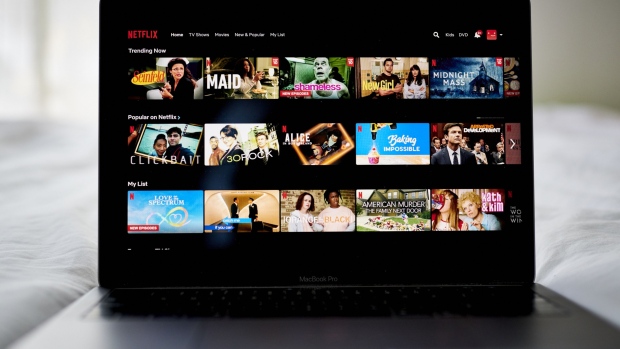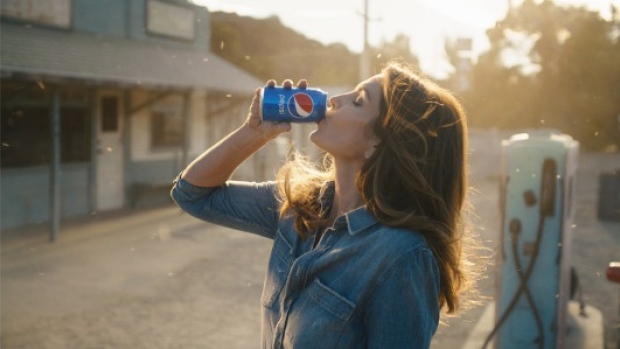Feb 11, 2022
How Peloton fiasco exposed risk for brands trying to break through
, BNN Bloomberg
The Super Bowl is the biggest property on American television: Industry expert Robert Boland
Peloton Interactive Inc. has taken investors for a wild ride during the pandemic: An initial boom from the stay-at-home trade gave way to a bust amid supply chain problems and the gradual easing of public health restrictions.
But it was a misstep in the product placement arena that offers a cautionary tale to brands and advertisers looking for new ways to connect with consumers.
The fiasco came in the form of a sweaty cycling workout — when “Sex and the City” actor Chris Noth, who plays Big John, was seen pedaling a Peloton bike in the Dec. 9 premiere episode of HBO’s spin-off “And Just Like That…” Shortly after stepping off that bike, the character dies of cardiac arrest. Almost as quickly, Peloton lost 11 per cent of its value in a single trading session on the Nasdaq. While there’s no telling how much the bad optics factored into investor sentiment that was already sour on the stock, it was yet another black eye for Peloton.
Lesley Myers, a producer and clearance coordinator who works on licensing, research, and brand permissions for television and film productions in the U.S and Canada, uses stories like this to deliver a simple message to companies that might allow their products to be seen on screen: understand context before giving clearance.
BEHIND THE SCENES OF CLEARANCE
“I’m constantly reading scripts and evaluating, doing breakdowns and making sure that we’re not offside,” says Myers, whose recent TV and film productions include “Astrid and Lilly Save the World,” “The Exchange” and “The Kindness of Strangers.”
With the intention of adding a dimension of realism to on-screen worlds, product placements are considered mutually beneficial agreements between production teams and companies, Myers explains.

According to statistics reported by Priceonomics, a data analysis company for content marketing, placements can increase brand awareness up to 20 per cent, with an increased likelihood of influencing purchase decisions when products are integrated within “emotionally engaging” content.
Myers warns that the potential marketing benefits must be weighed against the risks.
Oftentimes, particularly with episodic television, permissions are granted before subsequent scripts are written, she says. This can cause complications when it comes to brand alignment with characters or narrative arcs.
Aside from the limitations of context that come with a television series -- even writing rooms are often uncertain about the future fate of characters -- Myers says there can also be challenges with the wider moral direction of stories.
“When we’re filming, and we don’t have the last three scripts yet, I can make an evaluation and a recommendation for a product in the first block of episodes, not knowing that we’re going to get into questionable behaviour later on.”
While some companies stipulate that so-called bad guys can’t use their products, others have no problem with a villain repping their brand, Myers says. But in a television era heavily populated by anti-heroes, she also points out that a villain could often be difficult to identify, especially when the story is gradually evolving.
“Nowadays, television is so good that you have very complex characters -- there’s no black hats and white hats anymore. Even in Westerns, your black hats have good characteristics.”

If a character kills someone out of self-defence, for instance, there could be varying interpretations as to whether a company is still willing to have their products associated with the content, she says. Similarly, a character smoking a joint in a country that has legalized marijuana can seem morally acceptable to some brands, but not others. Complex moral discussions often accompany the context Myers assesses and presents.
“It’s a balancing act as a whole evaluation,” Myers explains. “Sometimes there’s more than one legal voice in the conversation.”
One of those legal voices is lawyer Ryan Plachcinski, head of legal affairs at Blue Ice Pictures, a Toronto-based independent film and television production company. Plachcinski serves as general counsel for numerous production teams, helping them establish a framework for assessing legal terrain from production to post-production.
“There are different requirements for different broadcasters and different licensors,” Plachcinski explains, referring to the legal parameters of providing context before receiving permissions.
“It really is an ever-changing landscape. There are different guidelines to abide by depending on who is going to be broadcasting a certain production. Amazon and Netflix will think differently from Disney. Everyone has to stay true to their own policies, and I can tell you at the forefront that there are competing views.”
The broadcaster’s licensing and advertising requirements can often be complicated by competing sponsors, Plachcinski explains. If an actor has a sponsorship with a certain brand, they could be contractually prohibited from using a competing product on-screen. Similarly, he says, if a company provides clearance for its product to be integrated, but the broadcaster is tied to a competing company, changes must be made within story production or set design. “All of that comes into play when we’re speaking with our writers to assess what can be shown and depicted.”
Plachcinski, who has worked with Netflix for the last three years, admits that the procedure for identifying how much context should be provided to companies ahead of production is ambiguous, with no overarching legal precedent imposing how much information is required. “Ultimately, it’s really case-by-case dependent on what the production is, and who it’s for.”
CABLE ADS STILL PACK A PUNCH
Jason Silver, president of FTWK, a Toronto-based product placement and brand integration agency, says that he believes more companies are attempting to capitalize on screen time uninterrupted by commercial breaks.

Cable television, however, still has a large audience. According to a 2020 proprietary study by Mindshare, a global media and marketing company, up to 67 per cent of Canadians are still paying for it. Forbes reported that broadcast and cable television generated up to US$39.9 billion in 2021 ad spending, citing a seven per cent increase from 2020.
Look no further than the Super Bowl. This year, the National Football League’s championship game neared US$435 million in ad revenue, with NBC selling 30-second airtime slots for a record-high of $6.5 million each, according to analytics by brand consulting company Kantar Group. As reported in the research, such a price could likely be attributed to last year’s return on investment: an average of US$4.60 per dollar spent, with ads for T-Mobile, Verizon, General Motors and Mountain Dew raking in the highest returns.
Bell Media (which owns BNN Bloomberg) holds the Canadian broadcast rights for the Super Bowl, with properties CTV, TSN and RDS garnering strong advertising demand for this year’s game coverage, according to a press release. “Heading into the conclusion of an incredible NFL Playoffs that featured record audiences, we’ve seen significant revenue growth this year, and advertiser demand for the Super Bowl has never been higher,” wrote Perry MacDonald, Bell Media’s vice-president of advertising sales and partnerships, in an email. “More than ever, advertisers value the massive audience and the impact that the Super Bowl delivers to their brands.”
So where do product placements fit in a marketing world still dominated by traditional cable advertising?
THE VALUE OF PLACEMENTS
Back in 2013, the International Journal of Business and Management published findings suggesting that more than 90 per cent of consumers with digital recording devices such as DVRs skip commercial breaks when possible. The study also found that viewers with DVRs are 38 per cent less likely to recognize and recall brands in traditional cable advertisements — regardless of whether or not commercials were fast forwarded.
Its research suggests that “product placement has created an ideal and inexpensive platform for marketers to promote a brand” while providing viewers with the choice of accepting or rejecting the general messaging.
FTWK measures the success of placement based on the degree of on-screen brand exposure, comparative costs of traditional advertising, and how seamlessly the product is being integrated.

One of its clients, the car company Mazda, appeared extensively in the TV movie “A Christmas Letter,” which aired on CBC in December of 2021. In the film, a Mazda vehicle has a total of eight minutes and forty-eight seconds of screen-time, according to data collected by FTWK. The Mazda logo was visible in 56 per cent of the brand’s appearance in the film, and the audience views of adults over the age of 35 amounted to approximately 392,320. FTWK calculates that this particular placement, given the duration of screen time, quality of exposure and size of targeted viewership, is valued at US$53,800.
All Mazda had to do was provide a car.
Examples like what happened with Peloton in the “Sex and the City” spin-off is a testament to how much influence -- whether good or bad -- a placement could have on consumer perception, Silver says.
“There’s a lot of damage control after that, but it does at the same time show how powerful and impactful brand placement can be.”









